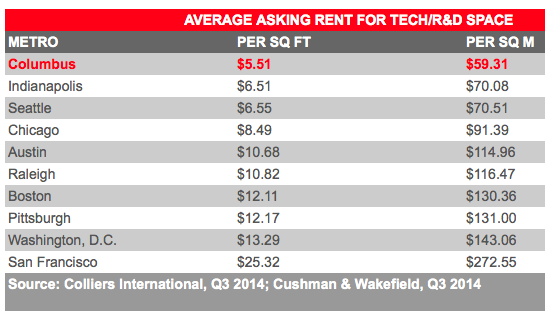The (Cloud) World is Coming to Columbus

The technology forecast for Columbus, Ohio, is mostly cloudy.
The capital of The Buckeye State has attracted so many datacenters from the likes of Amazon Web Services (AWS) and IBM over the last year that the city is claiming the title of the "Big Data Capital of America."
IBM joined a growing list of Columbus cloud operators in July when it announced a five-year IT services deal with Columbia Pipeline Group Inc. worth $180 million.
Along with cloud services, IBM said it would provide the gas pipeline company with analytics, security and mobile infrastructure services. Columbia Pipeline was recently spun off from NiSource Inc., a Midwest-based natural gas and electricity provider. IBM provides IT services for NiSource.
The July agreement calls for IBM to move Columbia Pipeline’s IT infrastructure and business applications such as human resources, pipeline operations and IT management from NiSource’s datacenter into a private cloud. That cloud infrastructure is hosted from an IBM datacenter in Columbus.
Meanwhile, it just keeps getting cloudier in Columbus. NewCloud Networks announced this week it would deploy its primary Midwestern production cloud node at a Columbus datacenter operated by Denver-based colocation provider Cologix Inc.
A key reason datacenters and cloud operators are flocking to Columbus is its central location. “Columbus offers proximity to more of the U.S. population than any other major city, with 47 percent of the country living within a 10-hour drive," insists Kim Gerhart, Cologix’s U.S. north general manager. "That proximity to the end user makes Columbus a natural place to deliver content and applications."
Cloud providers like NewCloud and colocation specialists such as Cologix note that the Midwest market is relatively underserved. Moreover, locating in a regional hub like Columbus allows cloud providers to install IT infrastructure as close as possible to customers. "This approach reduces latency between cloud nodes, as NewCloud aims for less than 40 milliseconds between any hop," the partners noted in a cloud services case study.
The city's supporters also note that Columbus-based American Electric Power offers utility rates below the national average and maintains more miles of high-voltage transmission lines that any other U.S. utility. (A similar argument could be made for the northern Virginia region, which also offers plenty on network capacity through a large installed based of fiber-optic cable, much of it still "dark.")
Along with access to IT talent, lower average hourly wages for IT workers and state tax incentives, Columbus offers another prized commodity: plenty of affordable land on which to build datacenters. City officials claim the average asking rent for datacenters and other IT facilities runs about $5.51 per square foot compared to $25.32 in San Francisco, $10.82 in Raleigh, NC, or $6.51 in Indianapolis.

Columbus, Ohio, claims the lowest cost for datacenter space.
Major cloud operators are buying into the city's pitch. In May, AWS announced plans for a $1.1 billion datacenter network in the Columbus suburbs. The facility is expected to create 1,000 jobs. Last month, Amazon.com said it would invest another $225 million in a regional fulfillment center.
State officials also say Amazon, IBM and other cloud providers are investing in the Columbus area in response to new Ohio tax incentives designed to attract more datacenters to the state. Tax laws were recently rewritten to allow companies building datacenters to share tax credits with their tenants. In addition, the state reduced the required annual payroll to $1.5 million, down from $5 million previously.
Related
George Leopold has written about science and technology for more than 30 years, focusing on electronics and aerospace technology. He previously served as executive editor of Electronic Engineering Times. Leopold is the author of "Calculated Risk: The Supersonic Life and Times of Gus Grissom" (Purdue University Press, 2016).










